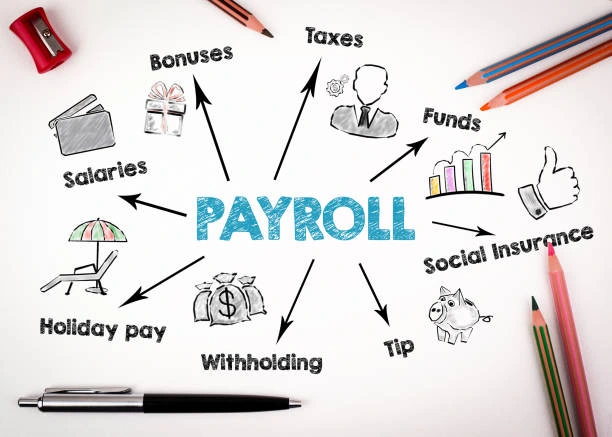What is Payroll Management?
Payroll management is a comprehensive system that handles all aspects of employee compensation, from calculating wages and salaries to managing deductions, taxes, and statutory compliance. It encompasses the entire process of compensating employees for their work, including regular wages, overtime pay, bonuses, commissions, and benefits administration. Modern payroll management extends beyond simple payment processing to include strategic workforce analytics, compliance monitoring, and integration with other business systems.
At its core, payroll management ensures that employees receive accurate compensation on time while maintaining compliance with local, state, and federal regulations. It involves complex calculations that consider various factors such as tax brackets, deductions, benefits contributions, and statutory requirements. The process requires meticulous attention to detail, as errors can result in legal penalties, employee dissatisfaction, and financial losses for the organization.
Effective payroll management also serves as a strategic tool for workforce planning and budgeting. It provides valuable insights into labor costs, helps in forecasting future expenses, and supports decision making related to compensation strategies, benefits programs, and organizational growth planning.
💡 Think of payroll management as the financial heartbeat of your organization—ensuring every employee is valued, compensated fairly, and legally compliant.
Core Components of Payroll
| Component | Description | Key Features |
|---|---|---|
| Gross Pay Calculation | Base salary plus overtime, bonuses, and allowances | Hourly rates, salary structures, incentives |
| Tax Deductions | Federal, state, and local tax calculations | Tax brackets, exemptions, withholdings |
| Benefits Administration | Health insurance, retirement plans, PTO management | Employee contributions, employer matching |
| Statutory Compliance | PF, ESI, professional tax, and labor law compliance | Automatic updates, filing requirements |
| Time & Attendance | Working hours, leaves, and attendance tracking | Biometric integration, mobile apps |
| Reporting & Analytics | Financial reports, payroll analytics, and insights | Custom dashboards, trend analysis |
Payroll Process Workflow
Pre-Payroll Preparation
The pre-payroll phase involves gathering all necessary data and setting up the payroll cycle. This includes collecting attendance records, updating employee information, processing new hires and terminations, and reviewing any changes in compensation or benefits. HR teams must verify all time and attendance data, approve overtime hours, and ensure all leave requests are properly documented. Additionally, this phase involves updating tax tables, statutory rates, and benefit contributions to reflect any regulatory changes.
Payroll Processing
The core payroll processing stage involves calculating gross pay based on hours worked, salary structures, and any additional compensation. The system then computes all applicable deductions including taxes, insurance premiums, retirement contributions, and other voluntary deductions. Advanced payroll systems automate these calculations while maintaining accuracy and compliance with current regulations. This phase also includes generating payroll registers, exception reports, and preliminary payroll summaries for review.
Payroll Validation & Approval
Before finalizing payroll, a thorough validation process ensures accuracy and compliance. This involves reviewing exception reports, verifying unusual calculations, and confirming all deductions are correctly applied. Payroll managers conduct reconciliation checks against previous periods and budget allocations. The approval process includes multiple stakeholders reviewing different aspects of the payroll, from HR validating employee data to finance confirming budget compliance and accounting accuracy.
Payment Distribution
The final stage involves distributing payments to employees through various channels such as direct deposit, checks, or digital payment platforms. This phase includes generating payslips, updating employee records, and ensuring all payments are processed securely and on time. Modern payroll systems integrate with banking networks to facilitate automatic transfers while maintaining detailed audit trails. Employees receive digital or physical payslips containing detailed breakdowns of their compensation and deductions.
Post-Payroll Activities
Post-payroll activities include generating statutory reports, filing tax returns, and maintaining compliance records. This phase involves preparing various government filings, updating general ledger accounts, and creating management reports for budgeting and forecasting purposes. Organizations must also handle any payroll corrections, process employee inquiries, and maintain detailed records for audit purposes. Regular reconciliation with bank accounts and third-party benefit providers ensures accuracy and completeness.

Compliance & Regulations
Tax Compliance
Tax compliance is a critical aspect of payroll management that requires staying current with federal, state, and local tax regulations. This includes accurate calculation of income tax withholdings, Social Security and Medicare contributions, and unemployment taxes. Organizations must maintain up-to-date tax tables, handle tax exemptions properly, and ensure timely filing of tax returns and deposits.
Key requirements include federal income tax withholding, state and local tax requirements, quarterly tax filings, and year-end tax documentation.
Labor Law Compliance
Labor law compliance encompasses various regulations including minimum wage requirements, overtime calculations, break time policies, and record-keeping obligations. Organizations must ensure compliance with the Fair Labor Standards Act (FLSA), Equal Pay Act, and various state-specific labor laws that may impose additional requirements.
Essential areas include minimum wage compliance, overtime calculations, record retention requirements, and equal pay regulations.
Statutory Requirements
Statutory requirements vary by jurisdiction but typically include contributions to social security systems, unemployment insurance, workers' compensation, and other mandated programs. In India, this includes PF (Provident Fund), ESI (Employee State Insurance), professional tax, and labor welfare fund contributions. Organizations must ensure accurate calculation of these contributions, timely remittance to appropriate authorities, and proper documentation for compliance audits.
Payroll Automation Benefits
Efficiency & Accuracy
Automation dramatically improves payroll efficiency by eliminating manual calculations and reducing processing time from days to hours. Automated systems ensure mathematical accuracy, apply consistent rules across all employees, and minimize human errors that can lead to costly corrections. This allows HR teams to focus on strategic activities rather than routine calculations and data entry.
Compliance Management
Automated payroll systems continuously update tax tables, statutory rates, and compliance requirements, ensuring organizations remain current with changing regulations. They generate required reports automatically, maintain audit trails, and provide alerts for important deadlines. This reduces compliance risks and protects organizations from penalties and legal issues.
Cost Reduction
Automation reduces labor costs associated with manual payroll processing, eliminates paper-based processes, and reduces the need for external payroll services. Long-term savings come from reduced errors, faster processing times, and improved resource allocation. Organizations can process larger payrolls with fewer resources while maintaining higher accuracy levels.
Employee Experience
Automated payroll systems provide employees with self-service portals where they can access payslips, tax documents, and update personal information. This improves transparency, reduces HR workload, and enhances employee satisfaction by providing 24/7 access to payroll information. Mobile apps and digital platforms further enhance the employee experience.
Common Challenges & Solutions
Challenge: Complex Tax Calculations
Managing multiple tax jurisdictions, varying tax rates, and complex deduction rules can be overwhelming for payroll teams. Different employees may be subject to different tax treatments based on their location, employment status, and benefit elections.
Solution: Implement automated tax calculation engines that stay updated with current tax laws and rates. Use payroll software with built-in tax compliance features and consider partnering with tax specialists for complex scenarios.
Challenge: Data Integration Issues
Integrating payroll systems with HR databases, time tracking systems, and accounting software can be complex. Data inconsistencies and synchronization issues can lead to errors and processing delays.
Solution: Invest in integrated HR and payroll platforms with robust APIs and data synchronization capabilities. Establish clear data governance processes and regular system audits to ensure data integrity.
Challenge: Regulatory Changes
Keeping up with constantly changing tax laws, labor regulations, and compliance requirements across multiple jurisdictions can be challenging. Failure to adapt to changes can result in penalties and legal issues.
Solution: Subscribe to regulatory update services, maintain relationships with compliance experts, and choose payroll systems that automatically update with regulatory changes. Establish regular compliance review processes.
Challenge: Security Concerns
Payroll data contains sensitive personal and financial information that requires robust security measures. Data breaches can have severe legal and financial consequences for organizations.
Solution: Implement multi-layered security measures including encryption, access controls, regular security audits, and employee training. Choose cloud-based solutions with enterprise-grade security certifications.
Best Practices for Effective Payroll Management
Standardize Processes
Develop standardized payroll procedures and documentation to ensure consistency across all payroll cycles. Create detailed process workflows, maintain up-to-date procedure manuals, and establish clear roles and responsibilities for all team members.
Key elements include documenting all payroll procedures, creating approval hierarchies, establishing quality control checkpoints, and maintaining process version control.
Regular Audits
Conduct regular internal audits of payroll processes to identify potential issues before they become problems. Review calculations, verify compliance with regulations, and ensure data accuracy across all systems.
Implementation includes monthly reconciliation reviews, quarterly compliance audits, annual system assessments, and continuous improvement processes.
Data Security
Implement comprehensive data security measures to protect sensitive payroll information. Use encryption, access controls, and regular security updates to maintain data integrity and compliance with privacy regulations.
Essential measures include role-based access controls, data encryption at rest and in transit, regular security training, and incident response procedures.
Continuous Training
Invest in ongoing training for payroll staff to keep them updated on regulatory changes, system updates, and best practices. Well-trained teams are more efficient and make fewer errors.
Training programs should include regular compliance training, system update workshops, professional development programs, and cross-training initiatives.
Conclusion
Effective payroll management is fundamental to organizational success, impacting everything from employee satisfaction and retention to regulatory compliance and financial health. As businesses continue to evolve in an increasingly complex regulatory environment, the importance of robust, automated payroll systems cannot be overstated. Organizations that invest in modern payroll management solutions position themselves for sustainable growth while ensuring their workforce is compensated accurately and on time.
The future of payroll management lies in automation, integration, and intelligent analytics. By embracing these technological advancements and following best practices, organizations can transform their payroll operations from a routine administrative function into a strategic asset that drives business value. Whether you're a small startup or a large enterprise, implementing proper payroll management practices will enhance operational efficiency, reduce risks, and support your organization's long-term success.
Remember that successful payroll management is not just about processing payments—it's about creating a comprehensive system that supports your workforce, maintains compliance, and provides valuable insights for strategic decision making. As regulations continue to evolve and technology advances, staying informed and adaptable will be key to maintaining effective payroll operations.
Ready to Transform Your Payroll Management?
Start by assessing your current payroll processes, identifying areas for improvement, and exploring modern payroll solutions that align with your organizational needs. The investment in effective payroll management will pay dividends in terms of efficiency, compliance, and employee satisfaction.
